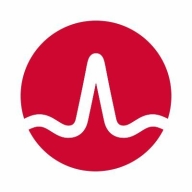

AutoSys Workload Automation and Rocket Zena compete in the workload automation category. AutoSys has an edge in pricing and support satisfaction, whereas Rocket Zena impresses with its comprehensive features justifying its costs.
Features:AutoSys Workload Automation handles complex workflows with strong scheduling capabilities, enhanced with security features and broad system integrations. Its user-friendly interface facilitates easy upgrades and usage. Rocket Zena is noted for its advanced automation and flexible integration options, providing an intuitive diagram-based interface for workflow management which simplifies complex operations. It features robust cross-platform job scheduling and containerized deployment capabilities.
Room for Improvement:AutoSys could benefit from faster integration cycles with new technologies and a more competitive upfront pricing model. Enhancements in predictive analytics and SLA management are areas for growth. Additionally, expanding the platform's user interface design would bolster its market position. Rocket Zena may enhance its licensing flexibility and documentation consistency. Expanding support for real-time operational visibility and facilitating more streamlined system maintenance processes would improve its offering. Moreover, simplifying the learning curve for containerized deployments would be beneficial.
Ease of Deployment and Customer Service:AutoSys's traditional deployment is complemented by strong support, assisting with complex scheduling and integration processes. It's known for stability and user-friendly updates, fostering ease of use. Rocket Zena, with its modern deployment model, emphasizes seamless integration and provides excellent customer service. It offers a containerized deployment, simplifying updates and configurations while maintaining high user satisfaction in terms of support and operational ease.
Pricing and ROI:AutoSys involves a higher initial setup cost but is seen as delivering justifiable ROI through long-term efficiency. It is cost-effective in reducing manual tasks by automating extensive workflows. Rocket Zena offers relatively lower upfront costs with competitive pricing, attributed to its innovative and feature-rich offerings. Its ability to automate repetitive tasks efficiently enhances user productivity, ensuring a satisfactory ROI.
| Product | Market Share (%) |
|---|---|
| AutoSys Workload Automation | 9.4% |
| Rocket Zena | 2.6% |
| Other | 88.0% |


| Company Size | Count |
|---|---|
| Small Business | 13 |
| Midsize Enterprise | 5 |
| Large Enterprise | 77 |
| Company Size | Count |
|---|---|
| Small Business | 3 |
| Large Enterprise | 6 |
AutoSys Workload Automation efficiently manages complex workloads across platforms, offering high availability and seamless platform integration. Its reliability and scalability are valued for enterprise-level automation, enhancing job management and reducing manual effort with robust scheduling and advanced security.
AutoSys Workload Automation is known for its user-friendly capabilities, effectively handling cross-platform job scheduling with mainframe integration. It supports high availability, ensuring reliable performance for critical operations. Despite enhancements needed in its GUI and integration capabilities, AutoSys remains effective for batch processing, file transfers, ETL, and managing dependencies across servers and applications. Improvements are suggested for deployment complexity and monitoring features. More effective licensing and scalability solutions, along with modern subscription models and cloud integration, could address cost and automation barriers.
What are AutoSys Workload Automation's key features?In industries like banking, insurance, and retail, AutoSys Workload Automation facilitates 24/7 automated job execution, ensuring smooth task automation. It allows companies to manage enterprise workloads effectively, catering to batch processing, file transfers, and handling job dependencies in a consistent manner.
Rocket Zena offers scheduling and dependency mapping, intuitive interface, and containerized deployment. It simplifies workflow automation, enhancing efficiency across platforms.
Rocket Zena's strengths lie in its scheduling capabilities, graphical interface, and efficient deployment. It supports users in task management with cross-platform scheduling, streamlining repetitive tasks through automation. The web-based client facilitates process visualization and workflow management, while the notification system enhances task handling. Users can manage mainframe, Linux, and Windows environments while integrating with SAP and Oracle, ensuring comprehensive automation and efficient job execution.
What are the key features of Rocket Zena?In industries like finance and manufacturing, Rocket Zena plays a vital role in scheduling batch jobs and automating file transfers. It helps adapt task scheduling to business calendars and integrate with existing platforms, ensuring a smooth workflow that meets business objectives.
We monitor all Workload Automation reviews to prevent fraudulent reviews and keep review quality high. We do not post reviews by company employees or direct competitors. We validate each review for authenticity via cross-reference with LinkedIn, and personal follow-up with the reviewer when necessary.